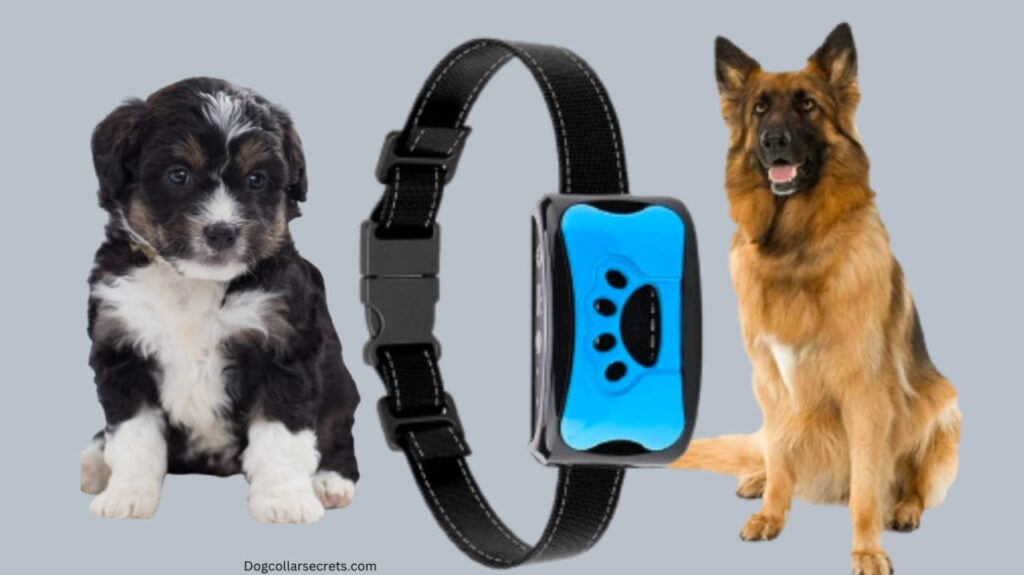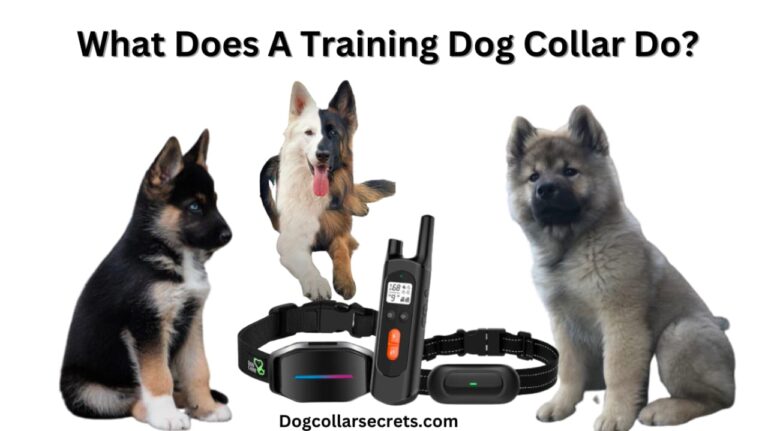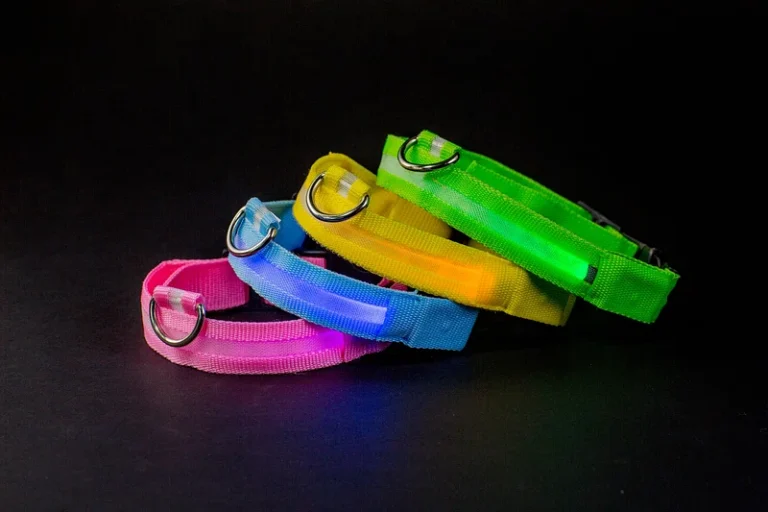Are shock collars cruel?

Are shock collars cruel?
Are shock collars cruel? This is a commonly asked question, and the answer depends on their usage. When used responsibly, shock collars with low levels of static stimulation can be effective tools in dog training. However, if misused or used excessively, they may be considered cruel as they can cause unnecessary stress, anxiety, and fear in dogs.
Many experts advocate for alternative training methods, emphasizing positive reinforcement to ensure a more humane and ethical approach. It’s crucial for dog owners to understand the potential impact and use shock collars judiciously, always prioritizing the well-being of their furry companions.
Are shock collars cruel? Shock collars complete guide
The appropriateness of shock collars hinges on their responsible usage. When employed with care and at low levels of static stimulation, these collars can serve as effective aids in dog training. The gentle correction they provide can help deter unwanted behaviors, fostering a quicker understanding of the canine.
However, the line between effective training and potential cruelty becomes evident when shock collars are misused or applied excessively. In such cases, these devices may cause distress, anxiety, and fear in dogs. It’s important to recognize that each dog responds differently to stimuli, and what may be tolerable for one can be traumatic for another. This is why many experts and trainers advocate for alternative approaches, particularly those centered around positive reinforcement.
Positive reinforcement involves rewarding desired behaviors with treats, praise, or toys. This approach creates a positive association with good actions, promoting a more joyful and willing participation from the dog. Emphasizing positive reinforcement aligns with a more humane and ethical philosophy in dog training. It’s crucial for dog owners to understand the potential impact of training tools like shock collars and to use them judiciously. Prioritizing the well-being of their furry companions means being attentive to their responses and choosing training methods that build trust and a positive relationship between the owner and the dog.

Is it cruel to put a shock collar on a dog?
Using a shock collar on a dog can be considered inhumane if not approached with care and responsibility. When employed thoughtfully and in moderation, these collars may serve as a means of communication in training, delivering mild corrections to deter certain behaviors. However, the risk of cruelty arises when shock collars are misused, leading to distress and fear in the dog. It’s essential to recognize that dogs have varying sensitivities, and what may be tolerable for one could be harsh for another.
Many animal behavior experts emphasize the importance of positive reinforcement techniques as a more compassionate alternative. Positive reinforcement involves rewarding desired behaviors with treats, affection, or play, creating a positive association with good conduct. This approach not only avoids the potential harm associated with shock collars but also contributes to a healthier relationship between the dog and its owner.
Ultimately, the ethical use of training tools should prioritize the well-being and comfort of the dog. It’s crucial for dog owners to educate themselves on various training methods, considering alternatives that promote positive interactions and foster a bond built on trust and positive reinforcement.
Do shock collars hurt dogs?
Shock collars are designed to deliver mild static stimulation to get a dog’s attention and discourage certain behaviors. It’s important to note that when used correctly, these collars are not intended to cause physical harm to dogs. The level of static stimulation is generally low, typically around 0.01 amp, which is considered mild and is unlikely to result in injury. The purpose is more about creating a noticeable and surprising sensation rather than causing pain.
However, the question of whether shock collars hurt dogs can depend on several factors. The sensitivity of individual dogs varies, and what might be tolerable for one dog could be distressing for another. Misuse or excessive use of shock collars can potentially lead to stress, anxiety, and fear in dogs, impacting their overall well-being. Responsible and informed use of shock collars, combined with an understanding of a particular dog’s temperament, is crucial to ensuring that these tools are used without causing harm.
While shock collars are a tool that some trainers and dog owners use, it’s important to consider alternative training methods, especially those based on positive reinforcement. Positive reinforcement focuses on rewarding good behavior with treats, praise, or toys, creating a positive association with desired actions. Choosing training methods that prioritize the welfare of the dog and foster a positive relationship between the owner and the pet is key to successful and humane training.

Does Shock Collar Help With Jumping And Barking?
Absolutely, shock collars can play a role in curbing jumping and barking behaviors in dogs. When used properly, these collars deliver a small electric signal that catches a dog’s attention when they’re jumping excessively or barking non-stop. It’s like a little reminder to help them understand that these actions aren’t the best way to behave.
Now, it’s important to use shock collars the right way – setting the shock level just enough to be noticeable but not painful. Pairing the collar with positive reinforcement, like treats and praise when they stop jumping or barking, can make the lesson stick even better. So, shock collars can be like a helping hand in teaching dogs the right manners, but remember, the love and patience we show them matter too.
How To Use A Shock Collar To Stop Barking?
These are special collars designed to help teach dogs better behavior. Sometimes they’re called electronic collars or e-collars. These collars might seem a bit surprising, but they don’t hurt the dog. They work by giving a small, safe electric sensation, sort of like a static shock, you might feel when you touch something. The idea is to get the dog’s attention and help them learn to listen better
.These collars can also be called remote training collars or training collars. They’re used as part of training to stop behaviors like too much barking. When the dog barks or does something unwanted, the collar sends a little zap. This helps the dog understand that what they did wasn’t right. Remember, while shock collars can be useful, it’s super important to use them carefully and kindly to make sure our furry friends feel safe and understood.
Using a shock collar to stop barking can be done effectively without causing harm to your furry friend. Here are some key points to consider for using shock collars responsibly:
- Choose the Right Collar: Select a shock collar that’s suitable for your dog’s size and weight. Ensure it fits comfortably and doesn’t cause any discomfort or irritation.
- Introduce Gradually: Allow your dog to get used to wearing the collar without activating the shock feature. This helps your dog associate the collar with normalcy rather than discomfort.
- Lowest Setting First: Start with the lowest intensity setting and observe your dog’s response. The goal is to deliver a noticeable sensation without causing pain or fear. Continue reading.

Conclusion
In conclusion, the question of whether Are shock collars cruel? depends heavily on their responsible and ethical usage. When used thoughtfully and in moderation, shock collars can be effective tools in dog training, providing a quick and noticeable correction. However, the potential for cruelty arises when these collars are misused or applied excessively, leading to distress, anxiety, and fear in dogs. Many experts and trainers advocate for alternative methods, particularly those centered around positive reinforcement, as a more humane and ethical approach to training.
It’s crucial for dog owners to understand the potential impact of shock collars and to use them judiciously, always prioritizing the well-being of their furry companions. Responsible use involves choosing the right collar, introducing it gradually, starting with the lowest intensity setting, and incorporating positive reinforcement techniques. While shock collars can be part of a training toolkit, they should be applied with care and consideration to ensure that the training process is effective and, most importantly, compassionate.
This may also be helpful for you: How To Walk A Dog Without A Collar?
Are Dog Training Collars Effective?
Do Vets Recommend Anti Barking Devices?
FAQ
Best training collar for stubborn dogs:
The ideal training collar for stubborn dogs can vary, but options like collars with vibration or sound cues, martingale collars, and head halters are commonly used. Positive reinforcement techniques, including treats and praise, can also be effective in training stubborn dogs.
Do shock collars work?
Yes, shock collars can be effective when used appropriately in dog training. They deliver a mild static stimulation as a quick consequence for undesirable behaviors. Responsible use, starting with low-intensity levels and incorporating positive reinforcement, is crucial for their effectiveness.
Are shock collars bad for dogs?
Shock collars are not inherently bad for dogs when used responsibly. Proper usage involves ensuring the static stimulation is noticeable but not painful. Misuse or excessive use can lead to stress, anxiety, and fear, prompting consideration of alternative training methods that prioritize positive reinforcement.
Do vets recommend shock collars?
Opinions among veterinarians vary, with some recommending shock collars in specific situations, emphasizing responsible use. However, many veterinarians and animal behavior experts advocate for positive reinforcement-based training methods as a more humane and effective approach.
How painful is a dog shock collar?
A dog shock collar is designed to provide mild static stimulation, and when used correctly, it should not be painful. The sensation is often described as surprising or startling rather than causing actual pain. Responsible use involves starting with the lowest setting and prioritizing the dog’s well-being and comfort in training.




